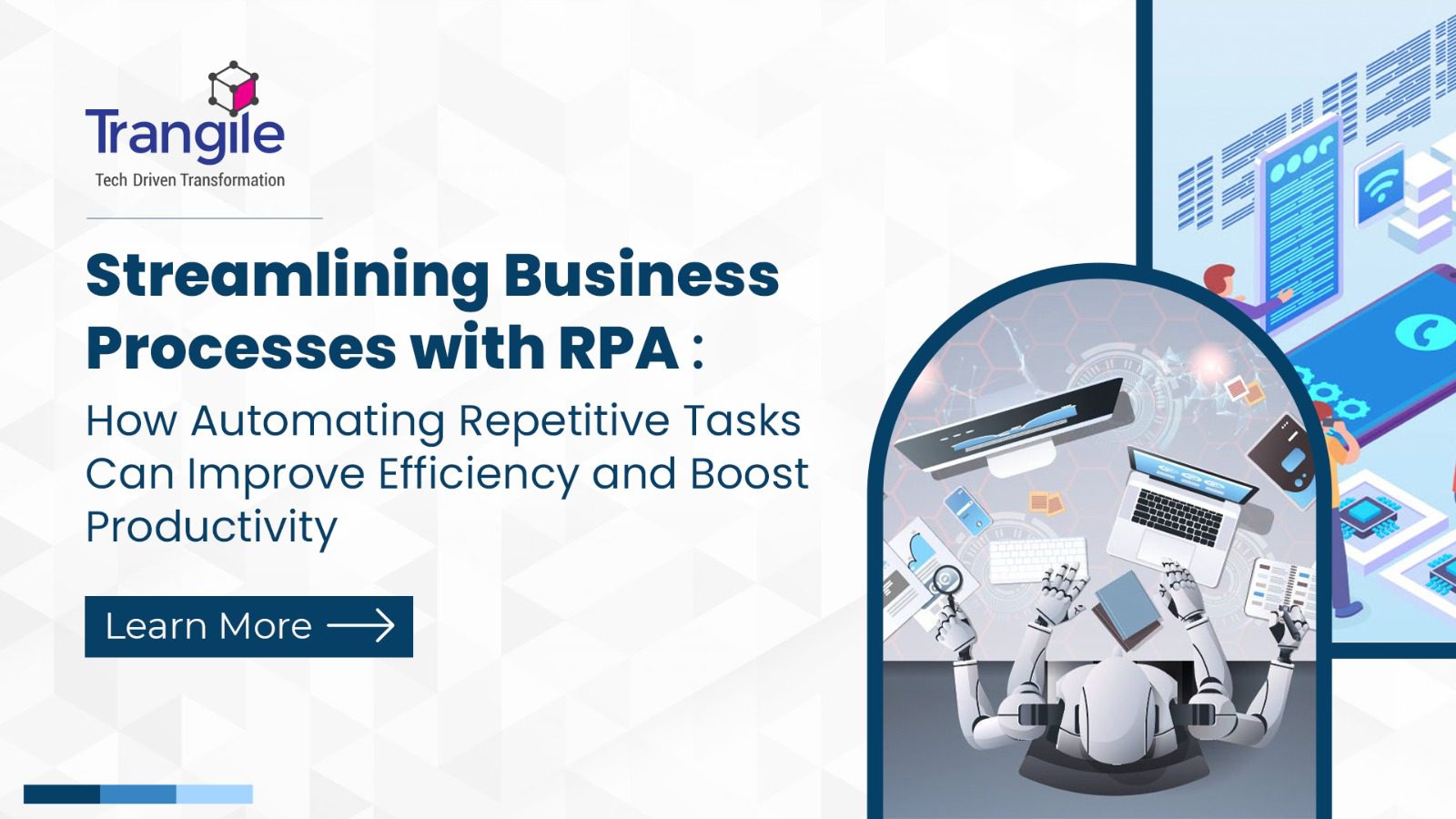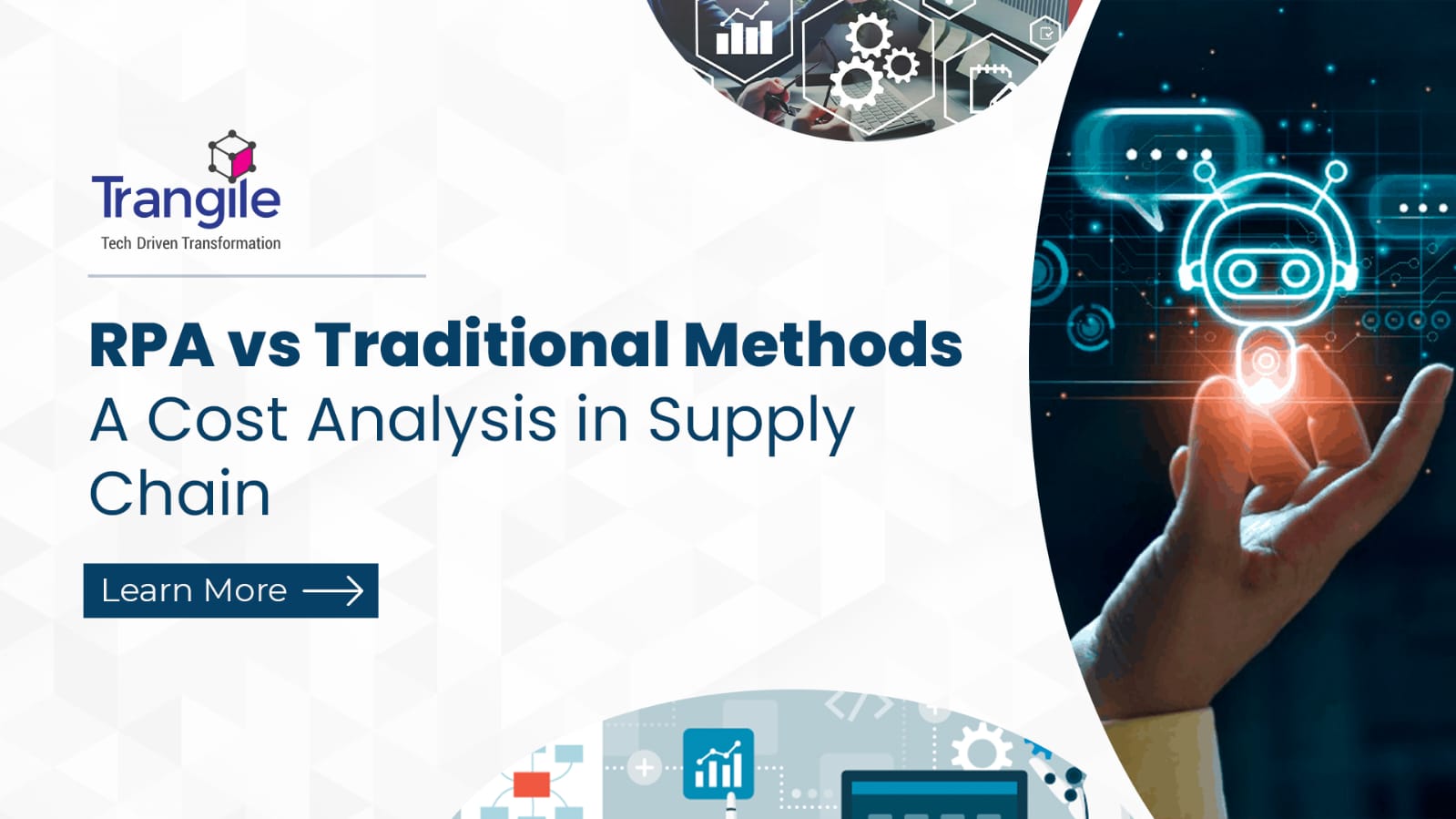Streamlining Business Processes with RPA: How Automating Repetitive Tasks Can Improve Efficiency and Boost Productivity
In today’s fast-paced business world, time is of the essence, and companies are continuously seeking ways to improve efficiency and productivity. Robotic Process Automation (RPA) is a rapidly growing technology that is gaining traction in various industries due to its ability to automate repetitive tasks and streamline business processes.
In this article, we will explore the role of RPA in improving business processes, its use cases, and how businesses can implement it for increased efficiency and productivity.
The Role of RPA in Streamlining Business Processes
RPA uses software robots to automate manual, repetitive, and time-consuming tasks that require minimal decision-making. This technology can be used to automate a wide range of processes, including data entry, data extraction, customer service, and back-office operations.
By automating these processes, businesses can achieve higher levels of accuracy, speed, and cost-effectiveness, ultimately resulting in increased productivity and efficiency.
The Benefits of RPA for Businesses
The benefits of RPA for businesses include improved accuracy, speed, and cost-effectiveness. RPA robots can work 24/7 without requiring breaks, sick days, or vacations, resulting in increased productivity and efficiency.
In addition, RPA can help reduce errors and inconsistencies by eliminating manual data entry and other human errors. Finally, RPA can be more cost-effective than hiring additional staff to complete the same tasks.
Use Cases of RPA in Business
RPA can be applied across various industries and business functions. Here are some of the most common use cases of RPA in business:
- Finance: With RPA, finance and accounting processes such as accounts payable and receivable, invoice processing, account reconciliation, and financial reporting can be automated, leading to enhanced precision and acceleration of economic processes.
- Human Resources: RPA can automate HR processes, such as employee onboarding, payroll processing, benefits administration, and compliance reporting. This can help reduce the workload of HR teams and improve the overall efficiency of the HR function.
- Customer Service: With the help of RPA, businesses can revolutionize their customer service processes, from email and chatbots to order tracking and customer feedback analysis. By automating these processes, response times can be improved, wait times can be reduced, and the overall customer experience can be enhanced. With RPA taking care of the repetitive and mundane tasks, customer service teams can focus on providing personalized and attentive customer service, leading to increased customer satisfaction and loyalty.
- Supply Chain Management: Imagine having a seamless supply chain that runs like a well-oiled machine. With the help of RPA, this dream can become a reality. RPA is a powerful tool that can automate critical supply-chain processes such as order processing, inventory management, and shipping and delivery tracking.
By doing so, it can improve visibility, reduce manual errors, and increase efficiency. This means fewer delays, better tracking, and happier customers. With RPA in your supply chain management toolbox, you can streamline your operations and take your business to the next level. - Healthcare: By implementing RPA, healthcare facilities can streamline their operations and alleviate some burdens on their hardworking staff. Patient data entry, insurance claim processing, and medical billing can all be automated with RPA, freeing up valuable time for healthcare professionals to focus on patient care.Not only does this reduce the workload on staff, but it can also improve accuracy and efficiency in healthcare operations, ensuring patients receive the best care possible.
- Manufacturing: With RPA at its helm, manufacturing processes are revolutionized like never before. Whether streamlining order processing or optimizing inventory management, RPA can automate it all, making production efficient like a rocket.
And that’s not all – RPA can also help in reducing waste and cutting costs, ensuring a lean and optimized manufacturing process that spells success.
RPA can be applied to any process that involves repetitive, manual tasks, making it a versatile tool for improving efficiency and productivity in business operations.
Real-World Case Studies of Successful RPA Implementations
There are many real-world examples of successful RPA implementations across various industries. For instance, American Express was able to reduce its financial reporting process from 30 days to just a few hours using RPA.
In healthcare, a large hospital was able to reduce the time spent on insurance claim processing by 75% using RPA.
Finally, a large multinational bank was able to automate 85% of its trade finance processes using RPA, resulting in cost savings and increased efficiency.
Implementing RPA in Your Business
Implementing RPA requires careful consideration and planning to ensure it is deployed correctly and efficiently. The first step in implementing RPA is identifying the processes that can be automated.
Next, businesses need to determine the RPA tool that best fits their needs and the level of expertise required to operate the software.
Once these steps are complete, businesses need to develop an RPA roadmap that outlines the scope of the project, timelines, and milestones.
Key Considerations and Challenges in Implementing RPA
While RPA can offer many benefits to businesses, there are also some key considerations and challenges to keep in mind. These include ensuring data security and privacy, managing the impact on the workforce, and ensuring regulatory compliance.
Furthermore, businesses need to ensure that they have the necessary technical expertise and support to implement and maintain an RPA system.
The Future of RPA in Business
The adoption of RPA is expected to increase exponentially in the coming years. According to Gartner, the RPA software market is projected to reach $2.9 billion by 2021, up from $680 million in 2018.
Similarly, advancements in artificial intelligence and machine learning are expected to make RPA even more powerful, with the potential to automate more complex tasks that require decision-making.
Final Thoughts
RPA offers businesses an opportunity to streamline their processes, increase productivity, and reduce costs. The technology is versatile and can be applied to various industries and functions. However, implementing RPA requires careful consideration and planning to ensure it is deployed efficiently and effectively.
Businesses need to evaluate their needs, determine the appropriate RPA tool, develop a roadmap, and ensure regulatory compliance. With the continued advancement of RPA and artificial intelligence, the future of RPA in business looks promising, and it will undoubtedly continue to revolutionize the way we work.
Therefore, it is vital for businesses to consider implementing RPA to remain competitive and thrive in today’s fast-paced business environment.
Are you ready to take advantage of the RPA’s best aspects? Get started with Trangile right now.We’re here to help. Get in Touch with Us









